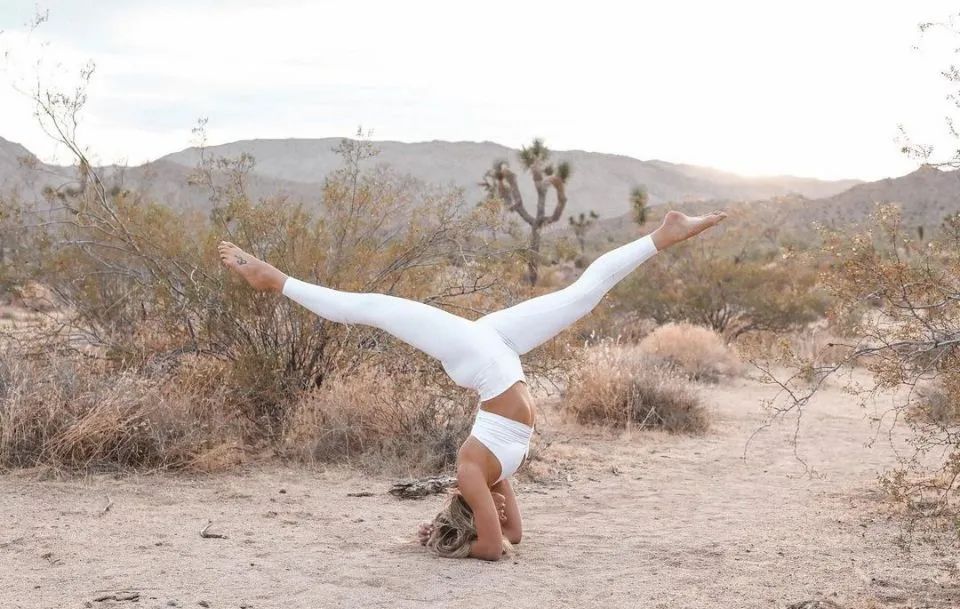Handstand, known as the “king of asana” of yoga, can strengthen the upper body and core, increase blood circulation, and deliver fresh blood to the glands responsible for hormone production.

It has many benefits.

It is important to understand the muscles you are exercising during the whole exercise process.

Handstands can exercise the whole core, shoulders and upper back.

In handstands, stretch your shoulders, which means that your deltoids will also get some exercise.

Triceps brachii and pectoralis can also be used during pushing off the ground and holding.

What actions can help you prepare for handstands? Four column support: you are in the flat support position with your arms at 90 degrees.

It is a good training action.

It strengthens many muscles used for handstand (especially tripod Handstand).

Flat support: straighten your arms, stretch your shoulders, and pull your navel towards the spine, which is also a good preparation position.

Dolphin pose: a good preparation for any handstand.

What are the variants of head handstand? There are two common types of head handstand: supporting head handstand and tripod head handstand.

They differ in the position of the arms.
In addition to these two, there are head handstands with various leg changes.
Tip: you should not try more advanced variants until you master the basic support head handstand.
90 degree handstand: this change has all the benefits of supporting head handstand and can strengthen abdominal muscles.
Lower your legs with your core until they are parallel to the ground.
Butterfly leg: practice this variant, you will get all the benefits of supporting head handstand, and you will also increase the flexibility of hip flexors.
After entering the handstand, rotate your hips and legs outward so that your knees face outward, and slowly bend your knees until the soles of your feet touch.
Straddle: like butterfly handstand, straddle handstand increases the flexibility of hip flexors, but they also stretch adductors and hamstrings.
Starting with the butterfly, pull the navel to the spine and the ribs to each other.
This will allow your internal abdominal muscles to function and provide stability when you support the plate, and then slowly straighten your knees and separate your legs.
Word horse: this type of handstand will strengthen your core and stretch your hips well.
From the supporting head handstand, slowly move one leg backward and release the other leg forward, as if you were making an inverted split lotus leg: Lotus head handstand also increases the flexibility of the hip.
The first step is to rotate your legs outward so that your knees are facing in the opposite direction and your heels are facing each other.
Bend the right knee and place the right foot on the left thigh, then bend the left knee and place the left foot on the right thigh.
Entering the handstand is half the challenge.
It requires a lot of upper body and core strength and control.
Often overlooked, but equally important is the correct exit posture.
Flexion entry: in this entry and exit, fully bend your knees to keep your legs close to your chest and in a folded position.
Then, spread out your legs at the same time so that the fully straight legs extend directly upward in line with the lower hips and shoulders.
To exit the handstand, follow the opposite steps.
Split leg entry: this entry and method reflects the process of curling up, but once your knees are pulled into your chest, you can straighten and lift your legs at one time, rather than lifting them at the same time.
To exit the handstand, follow the opposite procedure.
Straight leg entry: lift the legs as a whole up to the fully extended position in the air, so that the ankles, knees and hips are aligned and stacked vertically.
To exit the handstand, follow the opposite process.
This is the most difficult of the three.
It requires greater core and hip strength and more hamstring flexibility, but it is the safest because it has the slowest load on the neck.
Detailed explanation of posture support head handstand starts with four limbs on the ground, hands clasped, and forearms on the ground.
Rest the back of your head on your hands and put your head on the mat.
Keep your feet as close as possible so that your hips are higher than your shoulders.
Place one knee in front of your chest.
Once your knees are in the bent position, straighten your legs vertically upward.
Three legged handstand, four limbs on the ground, with the head on the ground.
Press your arms hard and place your knees on the triceps.
Pull your abdomen up and in, pulling your thighs and knees toward each other.
Then slowly straighten your legs into the pose…


